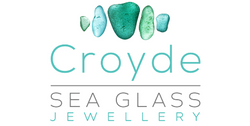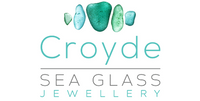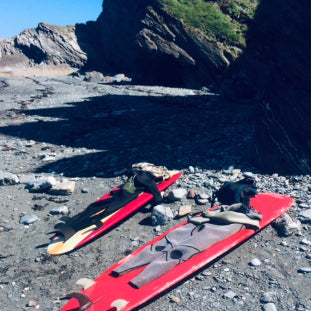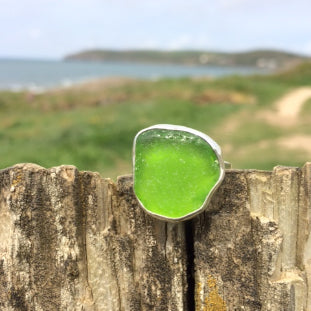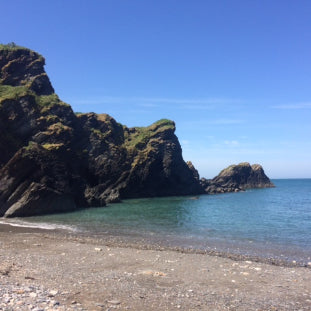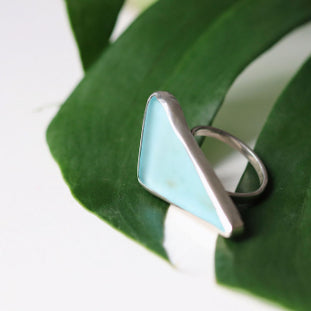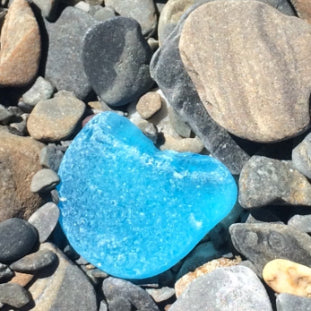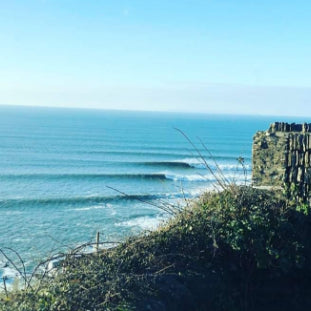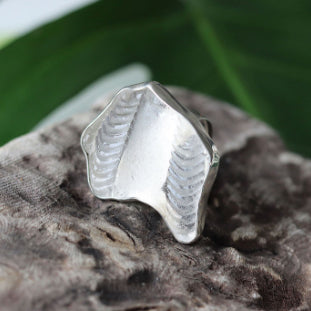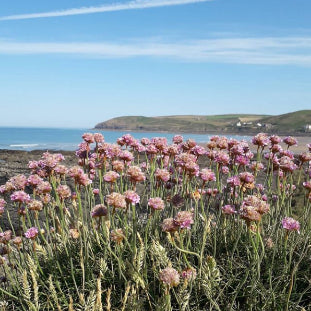About Croyde Sea Glass
Every piece of our ocean jewellery, whether it be made using a piece of seaglass, sea pottery or shell, is unique and locally sourced from our North Devon beaches. The bracelets, earrings, rings, brooches and pendants are lovingly handmade, using sterling silver. We don’t alter the glass or pottery in anyway, such as by cutting, reshaping or tumbling.
We do not import, or purchase, sea glass from anywhere else.
All our rings are size 10 (1.98cm), but are adjustable to fit most size fingers. Our jewellery comes in a reusable gift box and a recyclable envelope. Please note that all dimensions given are approximate and should be checked prior to purchase.
Our sea glass is not hardened mineral crystal, which, in its cut and polished form, is used to make gemstone jewellery. Most of these sea treasures are hard, but some soft minerals, man made, or organic pieces are used in sea glass jewellery because of their beauty. Rarity of colour and uniqueness of shape, is a characteristic that lends value to the piece.
The glass, pottery and shell that we use in our jewellery is soft. They are unlike hard gemstones. They can be easily shattered. The glass and pottery is that size because it has been smashed, weathered and ground down. It may be pitted, or frosted. It probably will be an irregular shape. It may be smoothly curved, or it may be angular and, as a result, it may rattle slightly in the bezel …but it will be unique.
Sea glass tends to lose its sheen when it dries. If you wish to make your sea glass shine, as if it had just come off the beach, rub a very small dab of coconut, vegetable, or baby oil, moisturiser, or something similar, on to the glass. Although the descriptions are as accurate as possible, the colour, tint and hue of the sea glass in the photos, may vary slightly from the actual piece.
Sea glass, also known as mermaid’s tears, or beach baubles, can be tumbled in the ocean for hundreds of years. Washed by waves, rolled in the surf and scoured by sand and shingle, it gradually wears away with every tide, sometimes lying hidden for months, years, decades or even centuries, before revealing itself briefly before being covered once again. Sanded smooth over time, they are some of the most beautiful treasures found along the coastline.
Sea glass, river glass or pottery, represents history. Starting their life usually, but not always, as a bottle, vase or plate, they had been discarded in some way. Each may have been abandoned, with other rubbish and dumped in landfill or on a tip, close to the sea, or a river. After years of sea cliff, or riverbank erosion, the rubbish tumbles down and the water eventually claims its prize. It may still be in one piece but, after years of battering among the rocks, it is broken into small fragments. River glass and pottery is often carried, in the current, to the sea, where it may wash up on to the beach. The longer the glass is submerged, it is filed smooth, frosted and crazed by endless movement over the bed, finally emerging as a gem. If not found, the glass will gradually be ground down, back into the sand it originally came from, and the plate back into clay.
Sterling silver reacts with sulphates in the air and in many common materials that may be near your jewellery items. Sterling silver becomes tarnished when oxygen or sulphur comes in contact with the silver itself. Then, it chemically bonds and the silver starts to appear dirty or discoloured. Therefore, sterling silver jewellery should be kept in a cool, dry location like a container, jewellery box, or airtight bag and cleaned regularly, using your favourite silver polish.
Most beaches and coves, close to towns or villages, have sea glass and pottery, either as a result of general public, or industrial waste disposal that eventually makes its way into the sea, or local rivers.
We are all keen surfers and live near Croyde Beach. Vikki was a Surf Instructor at Croyde and has been involved with making jewellery for decades. Karma, Vikki’s daughter, is also a Surf Instructor and has competed in surf contests Worldwide, as a member of the British National Surfing Team. Keith has been surfing for over 50 years and was the British National surf team Manager in the 80s. They have surf travelled extensively over the years and all their children surf regularly.
Commissions are welcome, if you have a piece of sea glass, pottery or pebble, to remember a place or moment in time.
